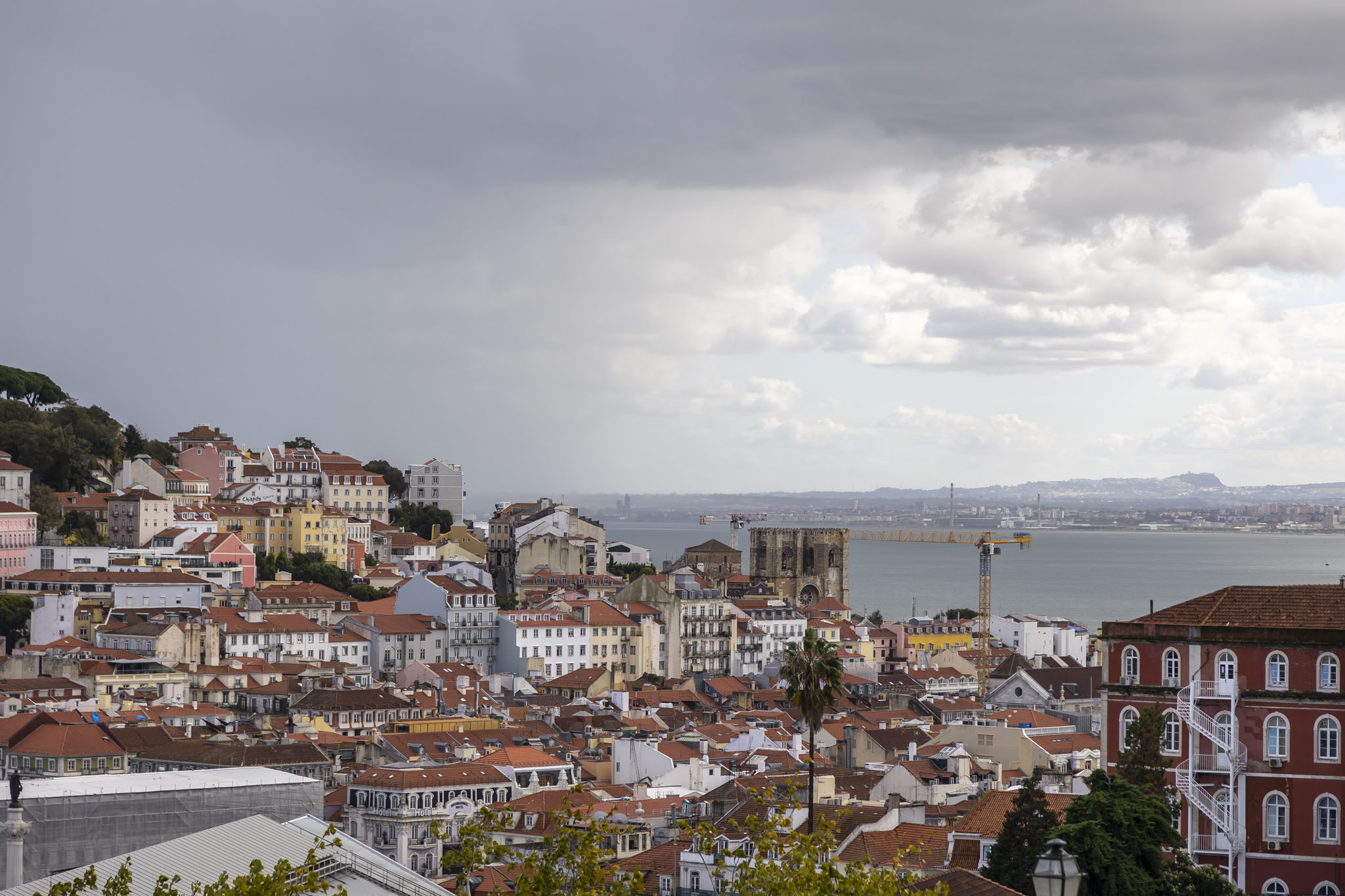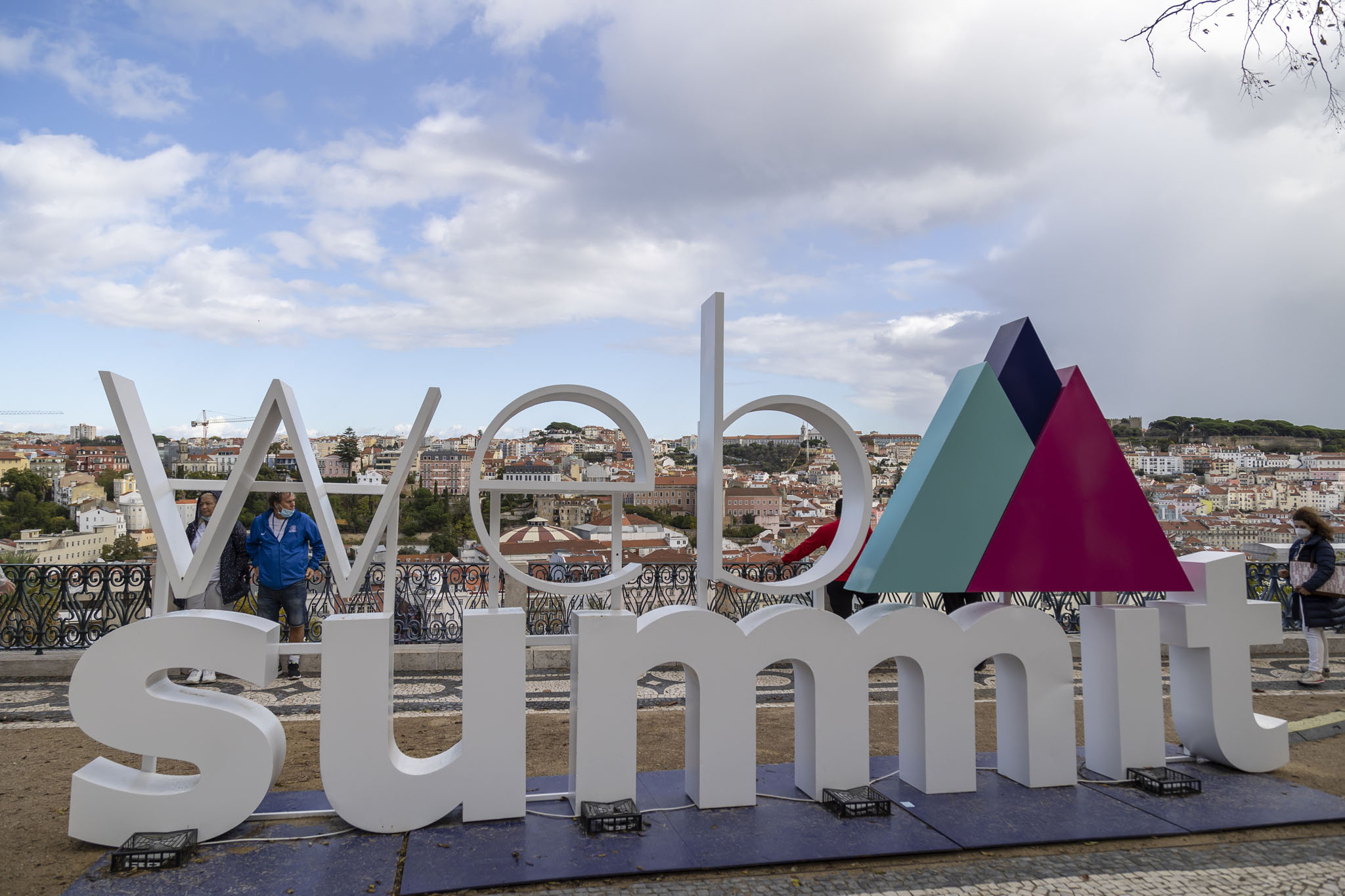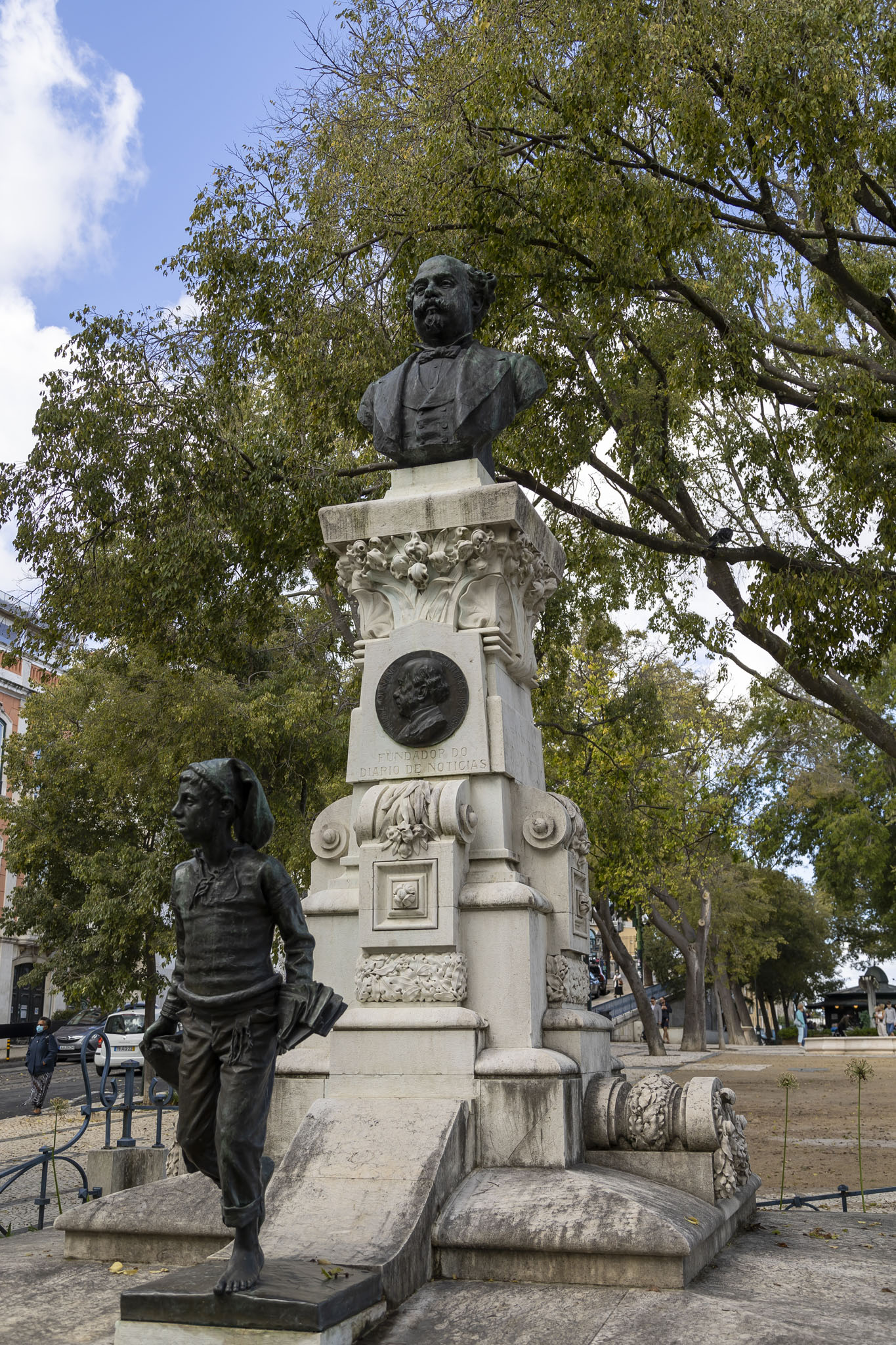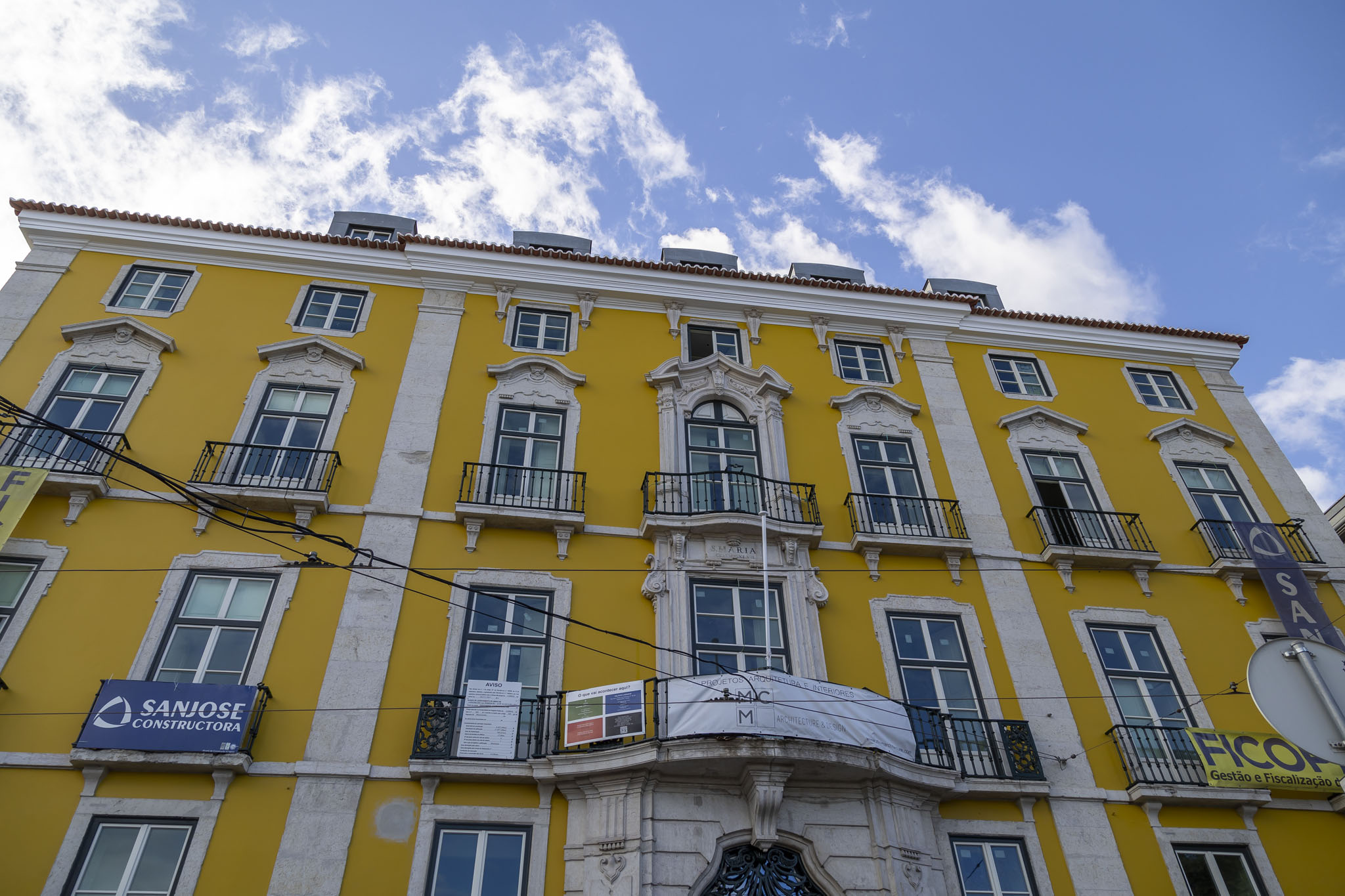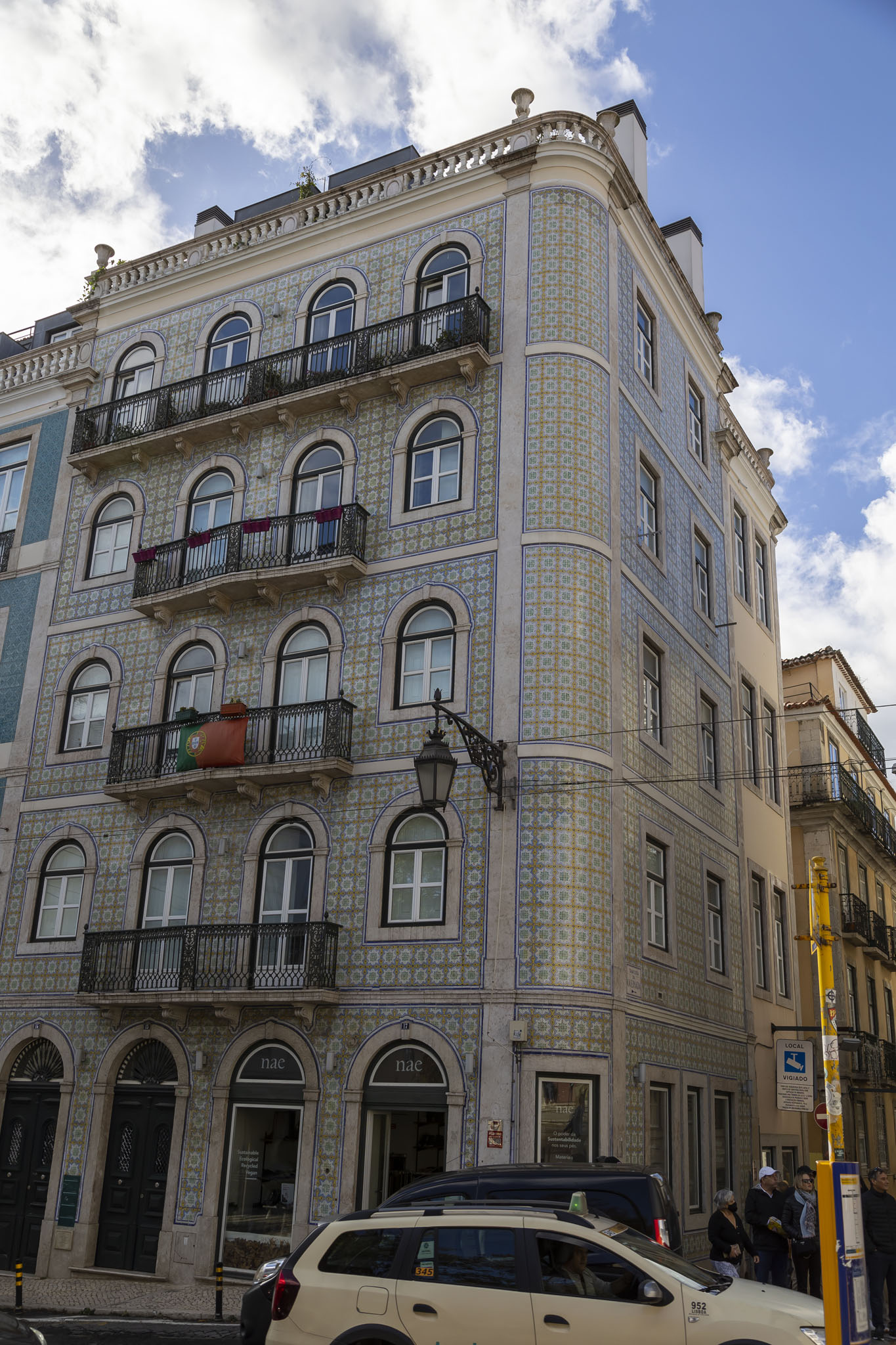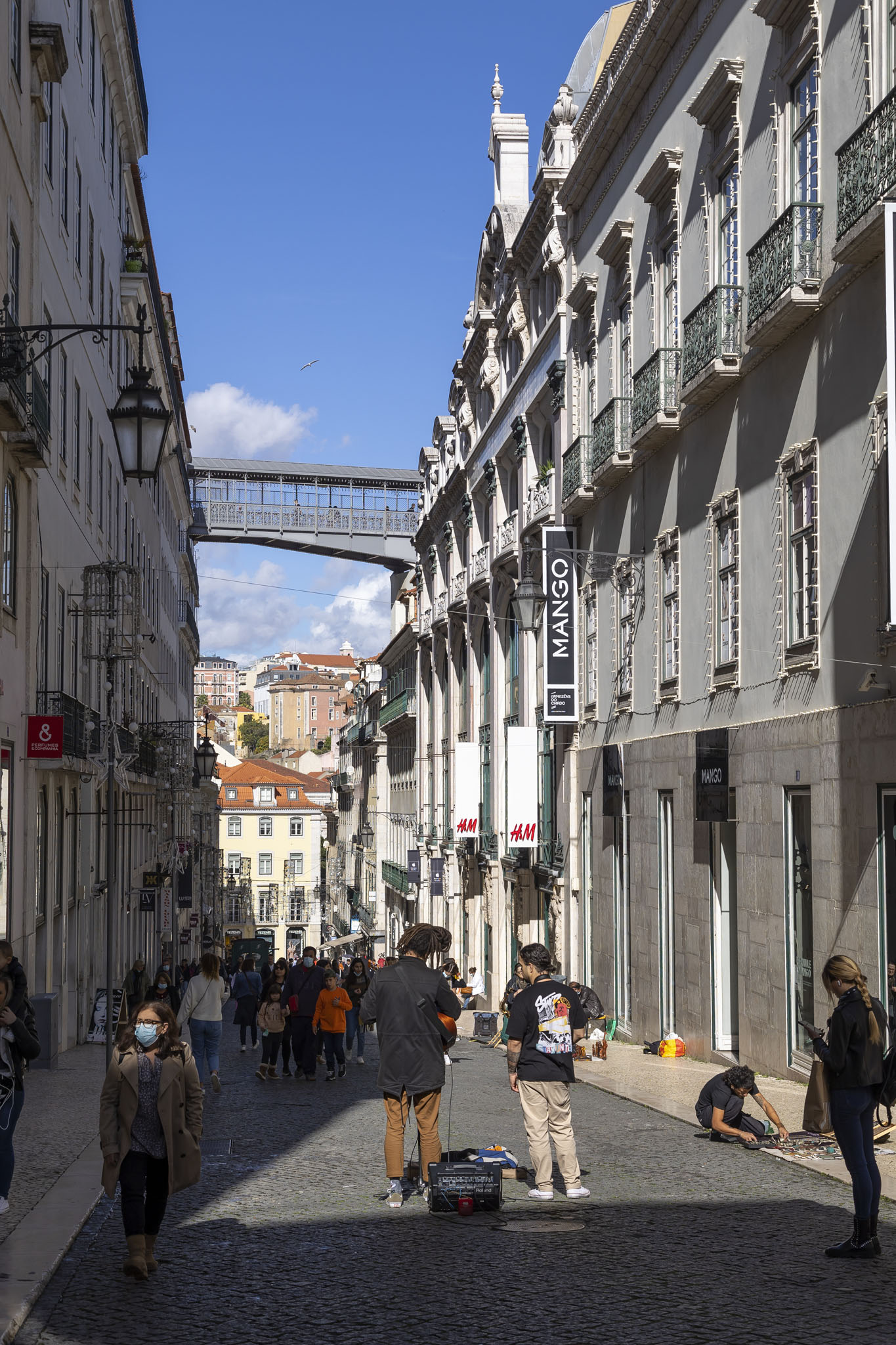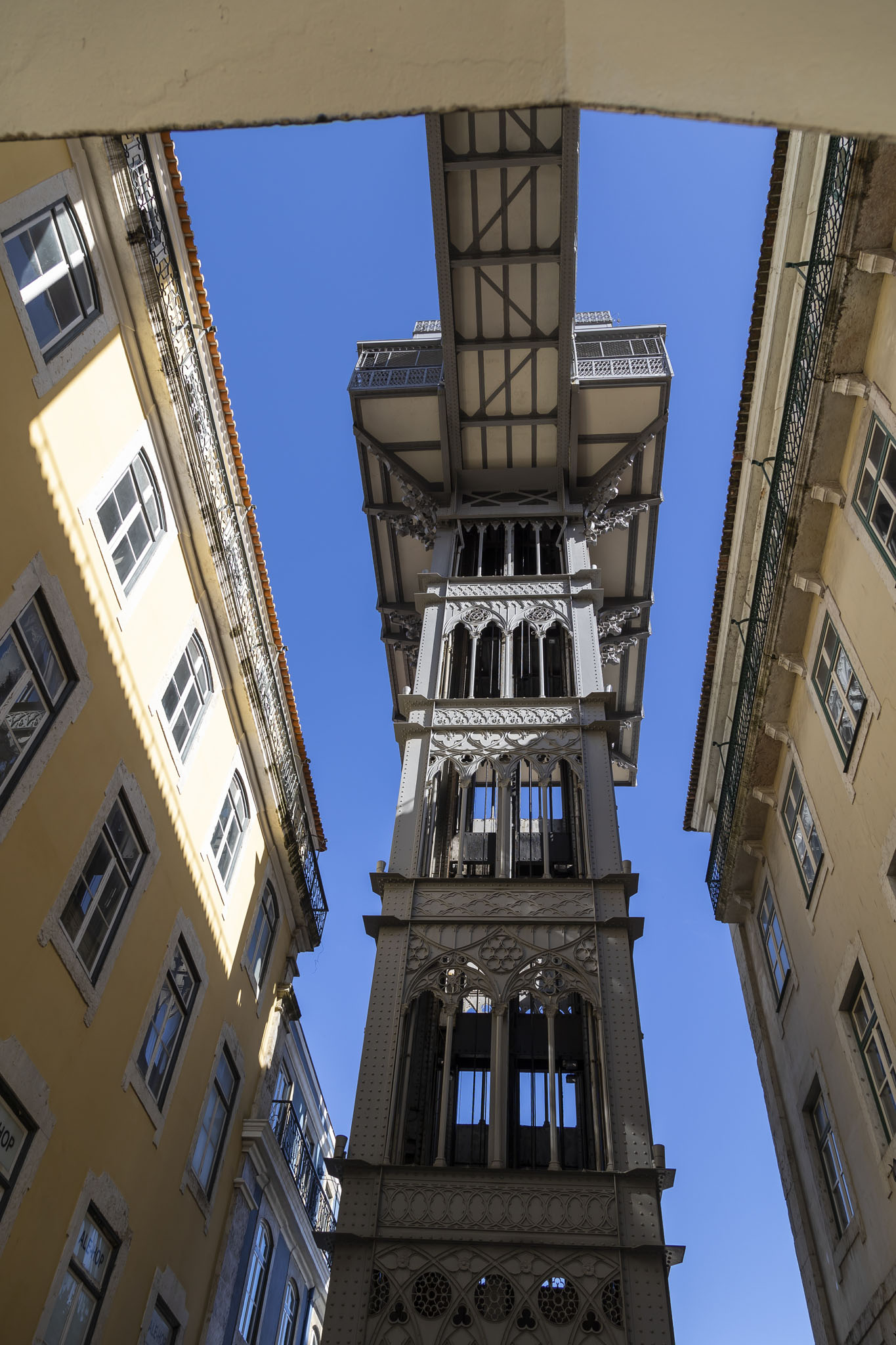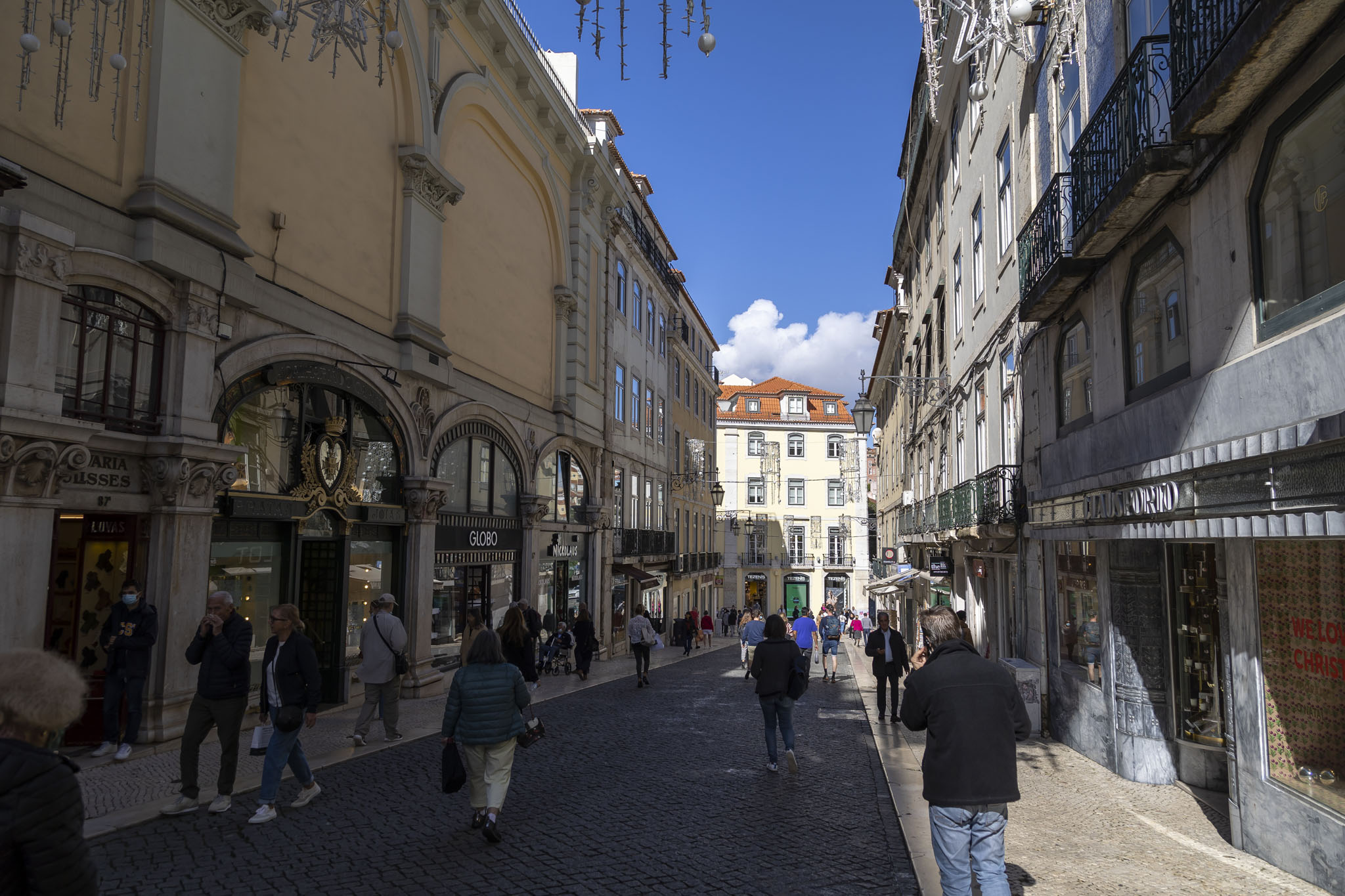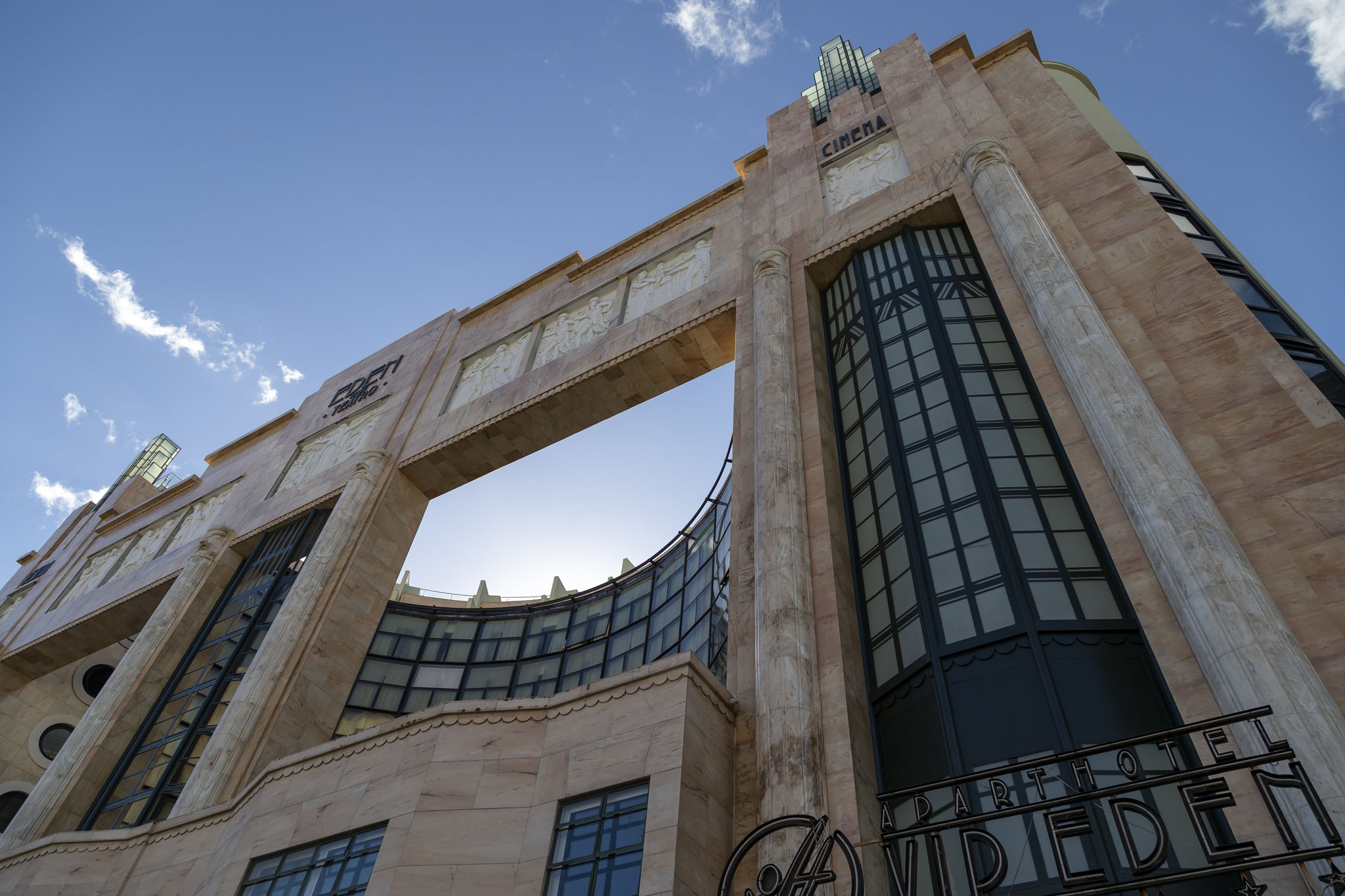If you’ve landed on this page hoping for a guide featuring a simple route of where to walk in Lisbon to take in most of the historic sites and sights then I hope you’re wearing your Trousers of Disappointment. I don’t write those sorts of posts. I just write travelogues and throw in some history and architectural information if it interests me. I feel it’s worth setting your expectations early. This post will cover the second half of our day’s excursion in the Portuguese capital city that had to this point given us a thorough grounding in Lisbon’s aqueduct and reservoir system. That’s more interesting and fun than that headline makes it sound. Trust me, this mostly anonymous author on the internet.
This second half of the Lisbon tour features a short walk from where we’d emerged blinking in the sunshine from the reservoir tunnels down to where the bus would be picking us up. The relatively short but winding route did take us past some of Lisbon’s historical spots, though, so we picked up some information along the way and here you’ll be able to learn what we learnt and see what we saw.
We began our walk where we’d finished the water system exploration, and that was at Miradouro de São Pedro de Alcântara. This is a terraced spot with a large fountain, popular as a viewing location thanks to its elevation. The annual Web Summit was taking place in Lisbon during our visit and, yes, I too think it’s horribly ironic and clearly the brainchild of people of management levels and above that a summit about all things web takes place in person.
“Let’s get the brightest brains and interested parties to discuss the latest innovations on the internet!”
“Yes! Great idea! Let’s book hotels and auditoria and arrange for people to fly in from all over the world! Somewhere fairly warm. There ain’t no I.T. person like a sweaty I.T. person.”
“So we’re not going to host this online using the internet itself?”
“You’re fired Keith. That sounds horribly like the sort of common sense that comes from the lower echelons of the workforce.”
The most prominent sight from our vantage point was Saint George’s Castle (or Castelo de São Jorge) and it certainly looks like the sort of place that would be top of our list for a visit if and when we ever return to Lisbon. Prior to being taken by the Christians in what was arguably the only success during the failed Second Crusade in 1147, the castle or other fortifications on the hill had been used defensively by Celtic tribes, Phoenicians, Greeks, Carthaginians, Romans, Suebi, Visigoths, and, finally, Moors. Personally, after the defences had been overrun by the fourth of fifth group of people I’d probably have written this location off as indefensible or just plain jinxed and set up camp somewhere else, but that’s just me, your average know-nothing-about-military-matters Mark.
We began our walking tour, and just before leaving the terrace we passed a memorial statue to Tomás Quintino Antunes who founded the Portuguese newspaper, Diário de Notícias, in 1864.
Very close to the statue was the uppermost point of the Ascensor da Glória, one of Lisbon’s famous funicular railways. We’d seen photos of the funicular trains before, looking pretty and yellow and clean and always photographed in bright sunshine and with high saturation and oh my god no, no these ones were not like that at all. Grim is the word that springs to mind. You think that a narrow, steep incline between old buildings with traditional funicular carriages riding up and down them sounds quaint, and maybe you think that a little bit of street art might add to the uniqueness and touristic appeal, but then you get some truly appalling graffiti instead and you wonder if you’ve accidentally transported something out of the 1970s that might have featured in the movie The Warriors to Europe by mistake. Yeah, if you’re thinking of riding one of Lisbon’s funiculars then I’d pick something other than this one.
Our walking route took us towards Largo Trindade Coelho, a public square for want of a better description, but this necessarily brought into view something you see a fair bit around Portugal by all accounts: tiled façades on buildings. You could probably guess their purpose, but in case it’s not clear, while these are now and always were to some extent decorative, originally, their glazed surfaces provided additional protection from damp conditions that the materials used for the buildings couldn’t adequately supply. Aesthetically, I’m not sold on the look of the tiles, but I imagine that if you’re the sort of person who loves flock wallpaper then you probably have a different opinion entirely.
Into Largo Trindade Coelho next, and the purpose of this was to have pointed out the buildings around it and the statue and marker inside. On the north side of the square was the Jesuit church and museum of São Roque, which is possibly Portuguese for Saint Rocky, portrayed by Sylvester Stallone in a number of movies. I can’t be sure as I’d wandered away from our guide to take some photos. The main statue there, though, of some local interest, was called O Cauteleiro and it’s a monument to the lottery ticket sellers, with the buying of lottery tickets once being a popular pastime for people desperate to escape poverty, and the country’s national lottery having been in existence for well over 200 years. The worn bronze on the hand and ticket of the statue shows you just how much people like to rub statues for luck despite any evidence of it working, and just how little people care about the transmission of germs or whether or not their hands smell like old pennies all day.
The other memorial in the square was the Consórcio de Dom Luís. This obelisk with circular crest was erected in 1862 to commemorate the marriage of Luís I to Maria Pia of Savoy. I’d like to say that they fell in love over their shared adoration of lollipops, hence the shape of the monument, but the truth is that Maria Pia wasn’t even Luís’s first choice for a wife. Following a number of deaths without heirs in the royal line of Braganza there was some rush to get Luís married and starting up the royal family baby production line. He narrowed some possible brides down from a list of noble houses around Europe, then asked his cousin, Queen Victoria, and his great-uncle, Leopold of Belgium, for advice. They both recommended Archduchess Maria Theresa of Austria but her father turned down the marriage on the grounds that she was too young. Thus it was that Luís picked Maria Pia of Savoy instead, and that request for a hand in marriage was accepted even though she was even younger than her Austrian namesake.
More tiled buildings and streets and pavements led us to the next stop.
Largo do Carmo was another public square with two items worthy of note. On the east side of the square stood the white walls of the Carmo Convent with its impressive gothic doorway recessed into the stone. That’s another historical location added to our “to visit when we come back to Lisbon” list. Although built in 1389 for the Carmelites, much of the exterior architecture facing the square was reconstructed in the early twentieth century to fix some of the effects of the 1755 earthquake responsible for a lot of damage and loss of life in Portugal. I covered some of the ramifications of that earthquake in the previous post in this travelogue series. The convent itself is now ruins and a museum.
The stone structure in the square in front of the arched doorway to the convent is the Chafariz do Carmo, an 18th century public fountain that was part of the city’s aqueduct system. The quality of its construction allowed it to survive pretty well intact when other structures in Lisbon had collapsed in the earthquake of that century, and we could tell from the stylised dolphins that decorated it both that it was connected in time if not physically to the Mãe d’Água reservoir that we’d visited earlier in the day and that stonemasons really didn’t know what a dolphin looked like back then.
Our Lisbon walk took us to the southern end of Rua do Carmo and northwards and downwards along its length is where we headed. Our next stop was visible all along this pedestrianised road and only required a small detour around a couple of different busking groups to reach.
The Santa Justa Lift was fully inaugurated in 1902, and, like the funicular trains, was designed to assist the people of Lisbon with getting up and down the low but numerous hills that made up their city. It was originally powered by steam, but within 5 years it had been converted to use electricity. Featuring neo-Gothic designs in iron, the lift stands 45 metres high and contains two cars capable of carrying nearly 30 people each in them up the seven storeys to the viewing platform and walkway at the top that’s a popular tourist attraction. We’d very likely take a ride in the lift should we return to Lisbon because it feels like the sort of thing a visitor to the city should do, but there was no time on this day’s trip.
Equally as interesting to me as the engineering wonder that was the Santa Justa Lift was the street art near its base. This was Two Pelicans In The Heart Of Lisbon by street artist Artur Bordalo (or Bordalo II), part of his Big Trash Animals collection, made mostly from rubbish as you could probably guess from the photos. Impressive work and a wonderful contrast to the decorations that had blighted the Ascensor da Glória earlier on our walk.
We continued along the Rua do Carmo with a few stops so our guide could point out some old shops along the way. Do you want some gloves? There’s a glove shop! The designs of these buildings were early 20th century in the main, Neoclassical for the main part but with hints of Art Nouveau to me.
Our short walking tour of Lisbon was almost at an end now. Coming out of the north end of Rua do Carmo we emerged at Rossio Square, the popular name for Praça de D. Pedro IV. Pedro IV briefly ruled Portugal, and when I say briefly, I mean briefly. He ascended to the throne in March 1826 and had abdicated by May in favour of his daughter. The reason for this was that he was already Pedro I of Brazil and working two jobs in two different time zones was just never going to work out. I couldn’t do it now and I’ve got the ability to work remotely over the internet. Take note, Web Summit people. Pedro had an interesting reign, filled with suppressing rebellions, becoming emperor, abdications, and scandalous affairs, but he is credited with helping to bring representational governments to power in Brazil and Portugal in place of the absolutist regimes they’d previously been subjected to, and a popular, attractive, open space in the centre of Lisbon named in his honour is the reward for that.
These sorts of walking tours tacked onto the end of other excursions are of necessity fleeting things designed to eat up some time, point out a few things, give you a taste of where you’re visiting, and almost always spending longer than you’d like in one place and not enough time at all in another. You can’t please everyone. We’d have liked to have wandered into the main part of Rossio Square to see the waved mosaic flooring there or the monuments or the fountains but we merely strolled past it and got to admire some of the architecture around the area from a distance. On the north side of the square was the Teatro Nacional D. Maria II in the Palladian Neoclassical style. It sits on the location of what had been the Baroque-style headquarters of the Portuguese Inquisition who, unlike their Spanish counterparts, were never immortalised in a Monty Python sketch. The headquarters had survived the Lisbon earthquake of 1755 but burnt down in 1836. Shame. It was decided to rebuild on the spot a theatre and it was named in honour of Maria II, the daughter to whom Pedro had abdicated the throne, and another member of the Braganza Royal Family who had a life filled with adventure: married off to an evil uncle who usurped the throne in classic fairy tale style is just the start of it.
It’s all going a bit architecture crazy here at the end of this account of our meander through Lisbon’s streets for which I make no apology as it’s something I’m very keen on and this is my site.
And so, still heading northwards from Rossio Square, now to a style of architecture I’d never heard of before: Neo-Manueline. As its name implies, this is a revival of an earlier Manueline style that is a 16th century Portuguese take on Gothic. The revival period covers the late 19th century when this train station – the Estação do Rossio – was built. It’s impossible to gaze at its façade and not be mesmerised by the doorways formed from overlapping horseshoe-shaped arches. Absolutely beautiful work. This station was the site of the assassination of Sidónia Pais in 1918, another one of late 19th and early 20th century Portugal’s Interesting People. What does his story contain? Military background, politician who helped to create a constitution that he then completely ignored when mounting a coup, and afterwards, becoming de facto President in a country that had no established position for that role, watering down the separation of religion and state to get the support of the Catholics. I mean, damn Portugal! Was there anyone in that country in a position of power from 1800 onwards who didn’t wake up each morning and think “Insurrection? Affair? Subjugation of part of the population? War with someone? Or something a little more old-fashioned and murdery today?”
Our walking tour of Lisbon came to an end at the place where our bus was due to meet us. We were a little early or it was stuck in traffic, but either way that gave me a great chance to be suitably impressed by the building we were standing outside. If you like Art Deco – and what monster doesn’t like Art Deco? – then you can’t help but gasp just a little at the sheer beauty that is the Teatro Eden. Functioning as a theatre above an arcade of shops from 1931 to 1989 it is now a hotel, with only the front-facing elements of the original building surviving. Sure, I wasn’t a fan of the tiled fronts on buildings generally, but the rest of Lisbon certainly wowed me with some of the engineering and architectural styling we got to see on this day visiting the city.
Opposite the theatre, in the middle of Restauradores Square, was the Monument to the Restorers, an 1886 obelisk which commemorated victory at the end of the war between Portugal and Spain in 1668 that had seen Portugal gain independence and its own royal house – the Braganza family – after the union of 1580 had subjected the country and all its overseas dependencies to Spanish rule under the Habsburgs. The two statues on the left and right side of the plinth in the photos represent Victory and Independence respectively.
The final photo I fired off before boarding our bus back to the port was of the lovely lines of the Altis Avenida Hotel, mainly because it just looked pretty against the blue sky over Lisbon. Despite a far older appearance, this was built in the 1940s, but the architect, Luís Cristino da Silva, was fond of the Salazarist style of architecture which borrowed elements from Germany and Italy’s futurism leanings towards impressive, modern representations of earlier, imperial designs.
And with that, and a short bus ride – that had we realised it was going to be quite that short we might have skipped in order to walk back and spend more time in the city, possibly stopping for a beer somewhere (because we’re us and that’s what we like to do) – we were dropped off back by the cruise terminal in Lisbon. The long building opposite the ships was a government building and reviews on Google suggest that being typical of governments the world over it’s not a place where anyone has anything to positive to say about experiences inside. Outside it looked nice, though.
MSC Virtuosa and P&O Ventura looked lovely on the Tagus, and all that surface water at the port from the rain showers that had accompanied the morning part of our excursion had dried out in the very dry, sunny, and warm afternoon of our brief city walk.
Back on board Ventura we made our way to the top deck to grab some lunch and a few shots of the Lisbon city skyline from our cruise ship just in case it was miraculously any different from how it had looked before we’d disembarked earlier that day. Of course it was different. The sun was in a new position in the sky. The colours were brighter. The shadows were elsewhere. The National Pantheon still dominated the view, though.
The next part of this Ventura cruise travelogue series will conclude our port stop in Portugal’s capital city of Lisbon with our departure from the city at sunset, to include cruising under the Ponte 25 de Abril.



